 Your new post is loading...
 Your new post is loading...
It’s no secret that copy editing jobs are changing. But how well have college editing courses kept up? Newspapers are dismantling copy editing desks or realigning the way copy editors function. And newsroom cutbacks have hit copy editors particularly hard. The number of copy editing, layout or online producer jobs dipped 35 percent between 2000 and 2015, according to the American Society of News Editors’ annual newsroom survey. Yet ACES: The Society for Editing is seeing record growth in its membership, which now tops 1,900. This suggests that editors are still working, but are using traditional editing skills on new platforms and in new venues. "The survey also identified gaps between what professionals said are important skills and what academics are teaching. Among the biggest: curation, editing for the web and analytics."...
As ad dollars that used to fund journalism pour into the coffers of Facebook and Google, the information business is experiencing a trend familiar to other American industries: The product they produce is now competing with cheaper versions coming from overseas.
Content farmers in the Philippines, Pakistan, Macedonia (of course), and beyond are launching websites and Facebook pages aimed at Americans in niches such as politics, mental health, marijuana, American muscle cars, and more.
Based on Facebook engagement and other metrics, some of these overseas publishers are now beating their American counterparts. In the process they’re building an industry centered on producing and exporting cheap (and sometimes false) information targeted at the US.
“This is like all of the basic stuff happening in economics and politics today,” said Tyson Barker, a political economist with the Aspen Institute Germany who specializes in international economic policy. “It's a globalization trend and you've seen it also in manufacturing and other industries.”
Sometimes an international offensive begins with a few shots that draw little notice. So it was last year when Melvin Redick of Harrisburg, Pa., a friendly-looking American with a backward baseball cap and a young daughter, posted on Facebook a link to a brand-new website.
“These guys show hidden truth about Hillary Clinton, George Soros and other leaders of the US,” he wrote on June 8, 2016. “Visit #DCLeaks website. It’s really interesting!”
Mr. Redick turned out to be a remarkably elusive character. No Melvin Redick appears in Pennsylvania records, and his photos seem to be borrowed from an unsuspecting Brazilian. But this fictional concoction has earned a small spot in history: The Redick posts that morning were among the first public signs of an unprecedented foreign intervention in American democracy.
CNN has partnered with Snapchat Discover for a daily news program called The Update. The show launches today on Snapchat, and provides a rundown of the top stories from the day featuring videos from CNN reporters and bureaus around the world. The Update is scheduled to begin streaming on Snapchat Discover each day at 6 p.m. ET and will also produce breaking news segments. Adweek’s Jason Lynch writes that each episode will feature five or more stories, all in Snap’s vertical video format—as well as breaking news segments....
A recent study released by the Donald W. Reynolds Journalism Institute identified the top trusted news sources. We looked into our data to see what these publishers are doing to rebuild trust in the media on social. Trust in the media remains dismal. A 2016 Gallup poll found that journalists are trusted just above lawyers and state governors. In the UK, journalists were in the bottom five of professions, lower than real estate agents. Recently, 28 newsrooms participated in the Trusting News project, which involved asking audiences about their thoughts on the credibility of news....
It’s hard being a journalist. The volume of content and data available on the web has increased exponentially. To research a story you need to make sense of many viewpoints, check available data, and review high volumes of articles and social posts. You also have to fact check thoroughly and find ways to do this very quickly. Last week I attended News:Rewired, a conference for journalists in London. The conference outlined some of the key challenges facing journalists for example, finding and tracking emerging stories, verifying stories, and synthesising multiple opinions on a story. At the event I reflected on how content curation has become a key skill for journalists. It is essential to gather together information, stories, data and opinions quickly and efficiently. Below are my thoughts on tools and approaches that journalists can use for their content curation....
Arguably the biggest digital media story of 2017 has been the case of brands pulling spend from Google properties following an investigation by The Times of London which contained evidence of branded adverts appearing next to controversial content on its video-sharing site YouTube. This has prompted a torrent of chest-thumping vitriol from ‘legacy publishers’, namely from The Times' owner itself News Corp, which itself harbors ambitions of launching its own ad network. The publishers strike back However, others from the ‘legacy publisher set’ have added volume to this cry, with this week’s appeal from members of The News Media Alliance which lobbied the US Congress to repeal laws that prevent them from collectively negotiating with Google (and Facebook) as they constitute “a de facto duopoly that is vacuuming up all but an ever-decreasing segment of advertising revenue”....
Fresco is a lot like Uber. But unlike similar apps where you request a car, takeout, or a even a dog walker, Fresco puts a call out for a photojournalist. A newsroom posts a request for video of, say, a crime scene, and a Fresco user in the area can accept, take a video of it, and upload it to Fresco. If the news outlet uses it, the Fresco user gets paid $50.
TV news stations across the country are using the app, but Fresco is particularly appealing to KTBY, a station in Anchorage, Alaska. Alaska is a big state, and many of KTBY’s viewers live in remote villages that are hours away by plane. It’s hard to cover those communities without spending a ton of money and time. In a Fresco promotional video, Scott Centers, COO of Coastal Television Broadcasting Company, which owns KTBY, marvels that Fresco offers an affordable alternative.
President Donald Trump often labels media companies as "failing." He's taken shots at BuzzFeed during press conferences. He's repeatedly pounded on CNN, and particularly enjoyed that network's recent journalism stumble. And of course, Trump has hammered the MSNBC show "Morning Joe" this week, causing a political firestorm that has stretched across both parties. If you follow the advertising business, you'd not be surprised to hear that traditional media business models are under a lot of pressure as consumer consumption habits are going through rapid changes driven by technology. But here's an ongoing question: are the media companies Trump refers to as "failing" actually failing? Here's a look at how these companies are performing from an audience and financial perspective....
The consistent refrain for publishers in the digital age is that everyone is still trying to figure out what can work, from platforms to advertising to workable, sustainable models. But as the path to enlightenment remains covered in fog, possibly smog, the effects of the digital era’s inscrutable disruption are being felt. The clearest recent illustration was last week’s crop of layoffs from outlets new and old: HuffPost, Vocativ, Time, the Los Angeles Times. The Reuters Digital News Report for 2017 reifies some of the trends good and bad cropping up in various organizations’ earnings reports and elsewhere, offering glimpses of what to try next, where to double down and what to avoid. One of the more obvious findings, and one we’ve all likely memorized by now, is that the growth of digital revenue has not been enough to offset the loss of print revenue. Subscriptions have been picking up some of that slack....
When I started my career at The Washington Post in the late 1990s, the newsroom wore a dusty, outdated look as if it were paying homage to its legendary past. The Post of today occupies an updated building on D.C.'s renowned K Street, in modern, glass-walled offices with a Silicon Valley aesthetic. This is the Post after Jeff Bezos, the Amazon CEO and e-commerce visionary, bought it in 2013. Since then, the paper's business and technology has almost outshone its award-winning journalism. Before Bezos, the Post was losing revenue and its losses were widening, as it struggled to find income to replace its decline in print ads. The Post is now privately owned and doesn't discuss specific figures, but says revenue and profits are up, as subscribers grow and digital ad revenue increases. Its monthly Web traffic has grown 56 percent, to 78.7 million over the past two years, according to ComScore. That reflects its journalism, but it also reflects big changes under the hood. Under Bezos, the newspaper has transformed its operations, from how it writes headlines and chooses photos, to how it generates ad dollars....
In other words, social data shouldn’t just be about measuring content distribution – it can also be used in the editorial process itself, right at the ideation stage.Many newsrooms already have particular ways of integrating social analytics and metrics into their workflows. Morning editors will keep a close eye on the stories that saw heavy engagement overnight as a means of informing their coverage in the early part of the day. But in a digital publishing space that is more competitive, where publishers have to fight hard to gain attention in news feeds, there’s room for much more creativity and with the data. We look at three ways that newsrooms can look at harnessing social data to improve their content and storytelling....
Following last year’s presidential election, some major U.S. newspapers reported a sharp jump in digital subscriptions, giving a boost to their overall circulation totals. The newspaper industry as a whole, however, faced ongoing challenges in 2016, according to new Pew Research Center analysis. Yearly financial statements show that The New York Times added more than 500,000 digital subscriptions in 2016 – a 47% year-over-year rise. The Wall Street Journal added more than 150,000 digital subscriptions, a 23% rise, according to audited statements produced by Dow Jones. And the Chicago Tribune added about 100,000 in weekday digital circulation, a 76% year-over-year gain, according to its filings with the Alliance for Audited Media (AAM), an organization that verifies many daily newspapers’ circulation figures. But these gains did not translate into circulation growth for the industry overall. A Pew Research Center analysis of data from AAM shows that total weekday circulation for U.S. daily newspapers – both print and digital – fell 8% in 2016, marking the 28th consecutive year of declines. (Sunday circulation also fell 8%.) The overall decline includes a 10% decrease in weekday print circulation (9% for Sundays) and a 1% decline in weekday digital circulation (1% rise for Sundays). Total weekday circulation for U.S. daily newspapers fell to 35 million, while total Sunday circulation declined to 38 million – the lowest levels since 1945. (For more information on how these totals were calculated, see our fact sheet.)...
|
Despite great strides, journalists around the world are not keeping pace with the transformations of the digital era. That is the conclusion of the first-ever global study on how news media are adopting new technologies, conducted by the International Center for Journalists (ICFJ). Against this background of immense challenges for the news industry, there is some good news: Digital news is making tremendous headway worldwide. The journalism community has long discussed how the digital revolution is impacting news media. Our study, The State of Technology in Global Newsrooms, focuses on a missing link in this debate: What technologies are journalists around the world using and how? We conducted the survey in 12 languages, and heard from more than 2,700 newsroom managers and journalists from 130 countries. This massive response identifies specific challenges the industry faces: a technology gap, unmet training needs, lack of audience engagement, concerns about building trust, an information security shortfall, and new revenue streams. The study also identifies the digital leaders and laggards....
Maggie Haberman started working at the New York Times in 2015 — with just one little problem. She didn’t know what she was supposed to be doing there.“ I was looking for a lane, so I picked up Trump because nobody seemed very interested in Trump,” Haberman said on the latest episode of Recode Decode, hosted by Kara Swisher. “I knew him and I knew his people.” Just two years later, she’s one of the NYT’s best-known reporters thanks to her coverage of Trump’s campaign and, now, his presidency. But for most of her career, Haberman had dreamed of one day being the Times’ chief New York correspondent, covering the city’s “broken” political system. Speaking with Swisher at the 2017 Texas Tribune Festival, along with Washington Post reporter David Fahrenthold, Haberman said she learned “the number one rule” about Donald Trump while working at the New York Post, which he would call frequently as a “source” of gossip about himself. “In his brain, two things are true,” she said. “No one speaks for him except him, even if he actually has a spokesman, and he believes that facts can be changed so that they can be something other than what you thought they were a day ago.”
Each year, I keep a running list of exceptional nonfiction that I encounter as I publish The Best of Journalism, an email newsletter that I curate weekly for its subscribers. This is my annual attempt to bring roughly 100 of those stories that stood the test of time to a wider audience. I could not read or note every worthy article published in the past few years, and I haven't included any paywalled articles or anything published at The Atlantic. But everything that follows is worthy of wider attention and engagement. I hope it provides fodder for reflection and inspiration for future writing. My thanks to all of the publishers, editors and, writers who made these gems possible.
There’s a moral imperative at the heart of journalism. But as impact has gone from moral beacon to a business metric, starting with the new generation of nonprofit newsrooms who adopted the language and standards of NGOs, impact is turning out to also be good business, for some. "How can you trumpet journalism that has impact when the core of your business strategy has been to reduce the amount of impactful journalism?" -Matt DeRienzo “Many commercial media outlets are taking it as a given that to show real, positive change as a result of their reporting will build a deeper relationship between their brand and their audience,” wrote Fergus Putt and Lindsey Green-Barber in a recent Tow Center report. That relationship is key to the reader revenue model powering digital growth at the New York Times, Washington Post, De Correspondent, and elsewhere. Executive director Matt DeRienzo of LION publishers, a group that supports local independent online news publishers, agrees but says the success of national outlets has yet to trickle down to local news. This especially applies to corporate-owned newspapers whose owners have cut many newsroom resources and centralized others far from the newsroom. Digital offerings from Tronc and Gannett have fared poorly so far....
It is true that users generally don’t want to watch a beautiful four-minute mini-doc that comes after a 30-second pre-roll ad. That’s video as we now know it. But what the market is showing, and what I fundamentally believe, is that viewers want to immerse themselves in a visual story that makes use of the full range of creative techniques afforded by the tiny little computer in their hand that’s connected to the internet. And what that looks like is not exactly a “video” — that’s a new form of journalism. That video that is currently soaring across social media — maybe it’s a text-heavy explainer with dynamic motion graphics, or a video-driven news story with sharply concise captions — is less an evolution of video itself and more of an evolution of the hundreds and thousands of pieces of text-based journalism that are produced and consumed digitally. Audiences that spent time consuming only the first couple of paragraphs of a news story are now watching 45 seconds of a video that conveys the same information. And, yes, sometimes with words on the screen. I believe this will become more sophisticated and more prevalent, and before you tell me that it’s intellectually inferior, just believe me — it’s not in its final form. It’s on us to innovate so that it has the power and impact we want it to....
MADRID — “Nos encanta la verdad.” We love the truth. Political fact-checking has existed in the United States for many years. FactCheck.org was established in 2003, and The Washington Post Fact Checker and PolitiFact were launched in 2007. In recent years, this movement representing a new form of accountability journalism has exploded around the globe. Now, there are 126 fact-checking organizations in 49 countries. Clearly, voters in many countries care about and want to know the truth. About 190 fact-checkers from 54 countries attended the fourth annual Global Fact-Checking Summit, July 5-7, 2017. The International Fact-Checking Network at Poynter Institute hosted the summit. The first meeting of fact-checkers from around the world took place in 2014, with 50 fact-checkers. Now the community has grown so much that we needed a “speed meeting” session for introductions....
So how can you keep up-to-date with all the latest and breaking social media news without sacrificing too much of your time? In this post, we’ll share some tools, tips, and tricks to help you stay up to date with social media news in just 10 minutes a day.
Scribes everywhere, look alive: Google is now funding a project which will use AI to write automated news stories,
The Press Association, a UK news agency, received about $807,000 from the third round of Google’s Digital News Initiative funding. Their project? Reporters and Data and Robots, or RADAR, an AI/human collaborative news site which will produce “a daily diet of compelling stories.”
RADAR is listed on the DNI site as a “large” project, with a goal towards providing a steady stream of ready-made content for smaller news sites....
As I reported in the villages of rural Nepal after the earthquake, I posted iPhone photographs with short dispatches on my Instagram account (@sonianarang). I suddenly found my Instagram feed full of questions about the situation in Nepal, so I kept posting more and more. In my Instagram photos, I tried to showcase the life of regular people I was meeting everyday – women who had built makeshift shelters, young mothers in a tent with their babies, and schoolchildren trying to study despite the disastrous earthquake. For me, Instagram was the perfect tool to get real-time photographs out into the world about how the earthquake had changed people’s lives. Everyday Instagram Feeds With more than 700 million people on Instagram as of April 2017, this popular photo-sharing platform has become a powerful tool for journalists globally. The rise of fascinating, region-specific Instagram feeds curated by a wide range of photographers offer an insider’s look into the “everyday” lives of people around the world. Some of my favorite feeds allow me to discover stories, people, and photographers in the Middle East (@everydaymiddleeast), Latin America (@everydaylatinamerica) and Africa (@everydayafrica), right from the palm of my hands....
The publication of the annual Digital News Report, from the Reuters Institute for the Study of Journalism at Oxford University, is eagerly awaited by news execs around the world. So much so, that the 2017 study is being accompanied by major presentations on June 22 at the GEN Summit in Vienna, and at the Tow Center for Digital Journalism at Columbia University in New York. Clocking in at 133 pages, this sixth annual study, has been expanded to cover 36 different markets around the world (the first, in 2012 examined just five countries), shedding light on many countries – including nations featured for the first time such as Mexico, Malaysia, Croatia and Romania – which are seldom reported in English-language media. Against this backdrop it’s fascinating to determine some of the similarities – and differences – between digital news habits in the U.S. and the rest of the world. With that question in mind, here are seven important developments worth highlighting....
I’m here to preach the gospel of quality news, and to talk about how combating fake news and hate news can not only be good journalism, but… good business.” Thus, Daily Beast editor-in-chief and managing director John Avlon opened MediaPost's Publishing Insider Summit, with a keynote addressing the hot-button issue that has come to symbolize America’s dysfunction and threaten its democracy — while mapping a way forward. Avlon began by acknowledging the decline of trust in media, pointing to a number of trends, including the rise of partisan media, which was an “attempt to balance implicit bias on the part of mainstream media with explicit bias,” as well as the fragmentation of the broader media environment....
In addition to giving you a weather update whenever you need it, The Weather Channel is known as an unapologetic defender of the idea, backed by basically the entire science community, that climate change is real, and a real threat to life on earth as we know it. It is unsurprising then, that the front page of its digital site would address President Trump’s decision to pull out of the Paris climate accord, announced today. The way it did, it, however, is a work of art. It starts in a straightforward enough manner, with a main story whose headline reads “Trump Pulls U.S. Out of Paris Climate Agreement; What That Means.” That may be the point when you notice that the group of stories below are all about climate change, and that the atypical headlines of seven of them collectively send an unequivocal message. Put them all together, and this is what you get: “So, What Happens to Earth Now? Still Don’t Care? Proof You Should …and More Proof… …and Even More Proof… …Or the Imminent Collapse of a Key Ice Shelf… …or Antarctica Turning Green… …or California’s Coast Disappearing Into the Sea…”...
|



 Your new post is loading...
Your new post is loading...




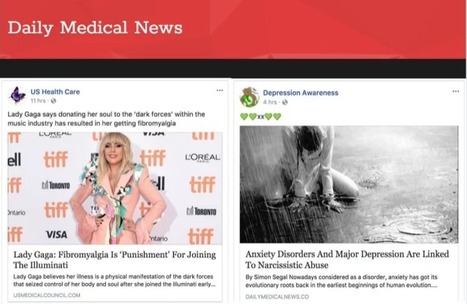
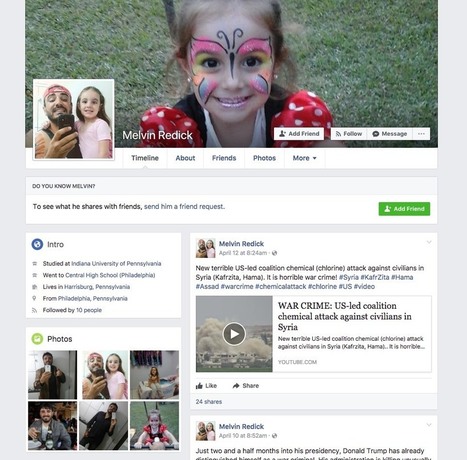



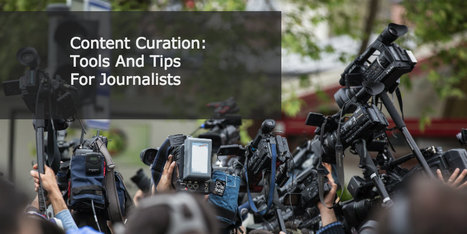

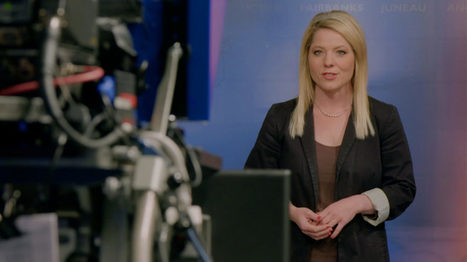





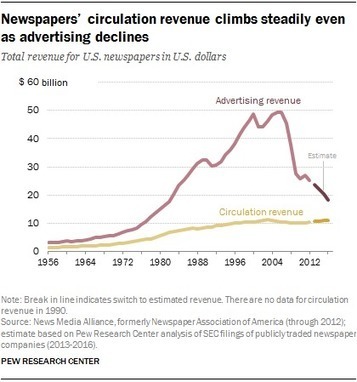



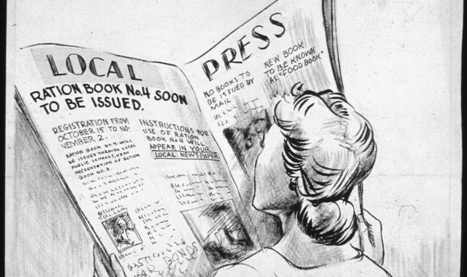
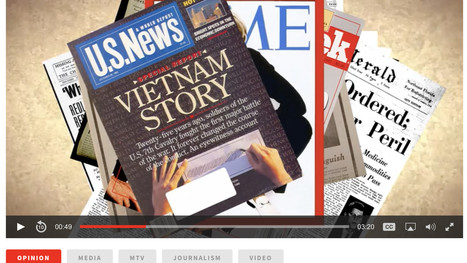
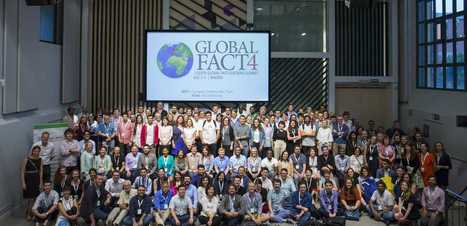













How journalism and content marketing are evolving using curation and analytics.